How to sell ebooks online in 6 steps (an easy guide)
This guide shows you how to sell ebooks online step by step - from choosing a topic to making your first sale and scaling with upsells.
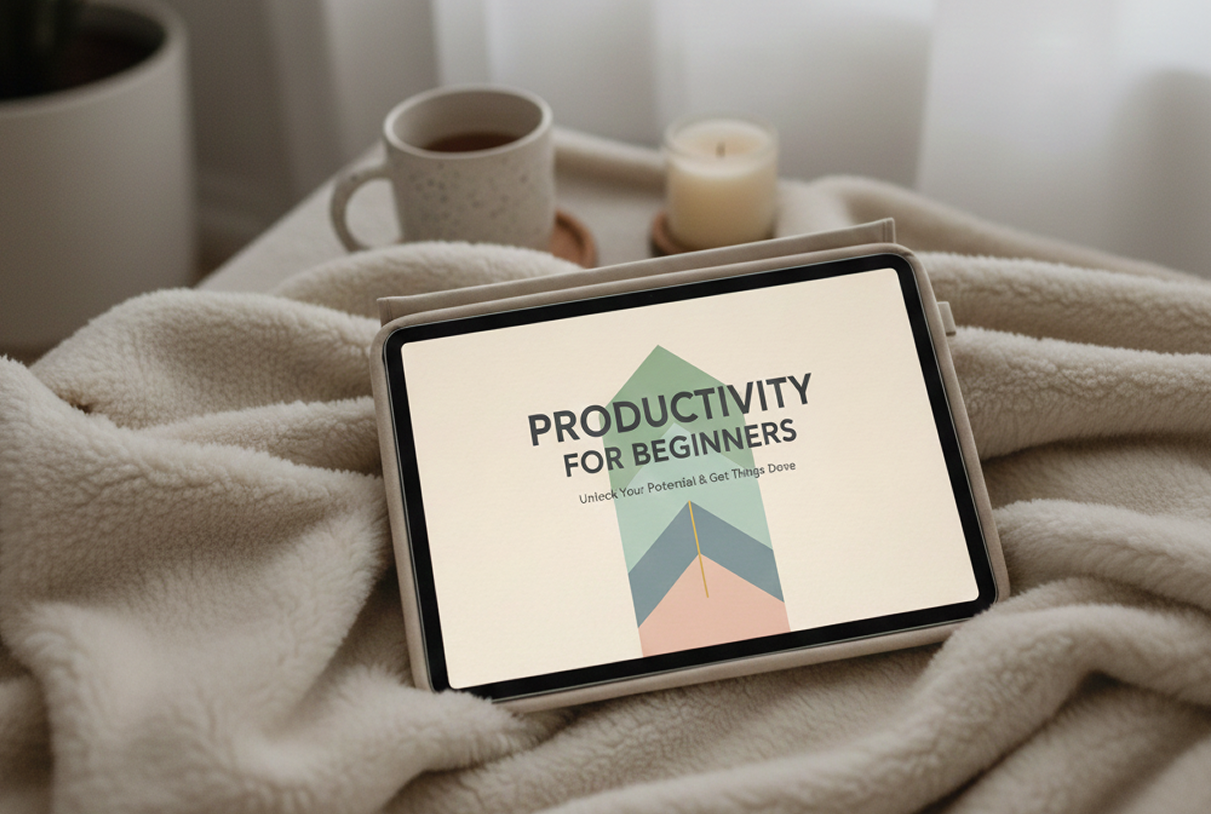
You've probably seen many creators claiming to have made thousands of dollars selling ebooks online. Others even claim to have generated millions of dollars.

Is it actually true? Can you really sell ebooks online and generate a good monthly income?
If yes, how do you do that exactly?
Now, if these are some of the questions on your mind, you are in the right place. In this article, I will show you how to go from zero to making your first ebook sale online. I will also explain how to go beyond your ebook and make 10x more than your ebook revenue.
Keep reading!
Key takeaways:
- You can sell ebooks online in 6 steps: 1. Pick a topic, 2. Create your ebook, 3. Price your ebook, 4. Choose an ebook selling platform, 5. Promote your ebook, and 6. Improve sales through upsells.
- You can make $500 to $100,000+ per year selling an ebook online.
- The best price for an ebook is between $9 and $49, depending on how specific the problem is. People will buy your ebook if it saves time, money, or stress.
- To create an ebook, you can use tools like ChatGPT (to write the content), Google Docs (to edit the draft), Canva (to design the ebook), Freepick (for images), and Easytools (for selling the ebook).
- Easytools is the best platform for selling and delivering ebooks online.
How to sell ebooks online and make money
You can sell ebooks online in 6 steps:
- Pick an ebook topic people actually want
- Create your ebook
- Price your ebook
- Choose a good ebook-selling platform
- Market and promote your ebook and
- Improve sales through upsells
Let's discuss each point in more detail.
Step 1: Pick an ebook topic people actually want
You first need to create a great eBook before you start thinking about sales and revenue.
Most people mess up here. They think, “I feel like writing about X” or “Oh, this is a good ebook idea.” A profitable ebook is one that people want to buy, not what you want to write. It solves their current problems and promises a better future.
Let's briefly see how to choose a topic people actually want. It will also show if your ebook will sell.
First, start with problems and forget about “passion”. Being passionate is not enough.
A profitable ebook = something you know well (niche) + a specific problem people are trying to solve (problem) + a solution people are willing to pay for (solution).
Let's say you are in the “productivity” niche. The specific problems could be:
- How to plan my week to finish my side projects
- How to manage a 9/5 job + a side project
- Productivity tips used by billionaires to complete 15 tasks per day
- Working when your energy is low? 5 tricks used by millionaires
Now that you know the problem to solve, do this quick test.
“This ebook helps [who] do [what] without [annoying thing they hate].”
Let’s see some examples:
“This ebook helps [founders] [plan their week] without [wasting hours on unnecessary tasks].”
“This ebook helps [new ebook sellers] get [their first 30 sales] without [spending money on ads.]
If you can't complete that sentence, your ebook is too vague and might not sell.
Finally, validate the ebook topic with a real online search. We need to see if people are searching for this pain point or solution online.
Enter your main keyword in a tool like Ahrefs or Semrush to see how many times people search for it on Google (they offer free trials). My keyword “weekly planning” shows that people Google it 880 times per month in the USA, and 48,000 times worldwide. This is a good number.

Note that the narrower the problem, the lower the search volume. If the number is too low, like less than 500, try different variations of the keyword: week plan, week planning, plan your week, etc.
And if the number is still low, use your parent keyword, which is ‘productivity’ in my case. It shows 336,000+ monthly searches.
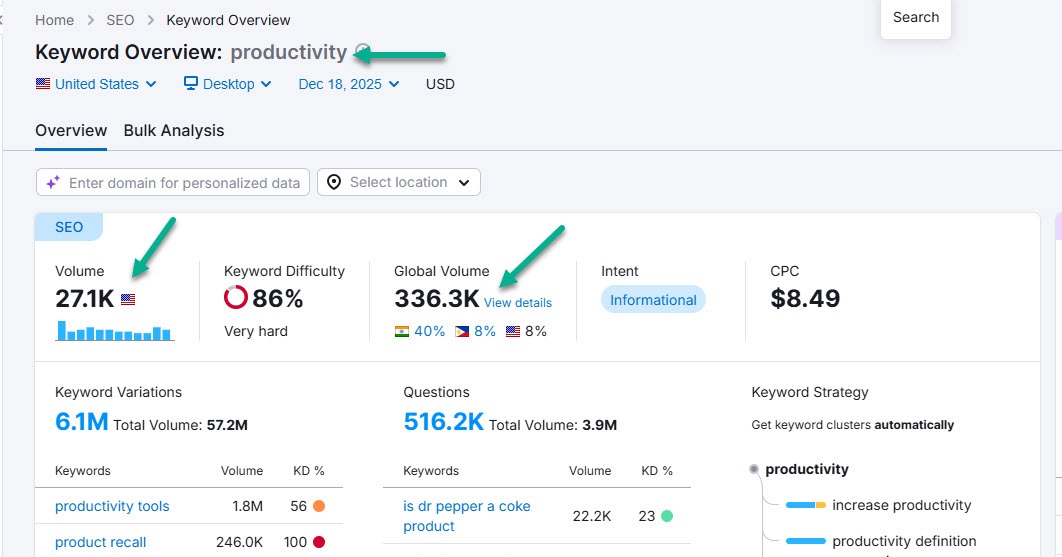
The idea is simple: Among the 336,000 searches about productivity, there are definitely people who don't know how to correctly plan their week without realizing it.
YouTube is another ebook validation platform. Search for your main keyword (weekly planning) and parent keyword (productivity) to see the number of views those videos got. Focus on videos published within 12-24 months.
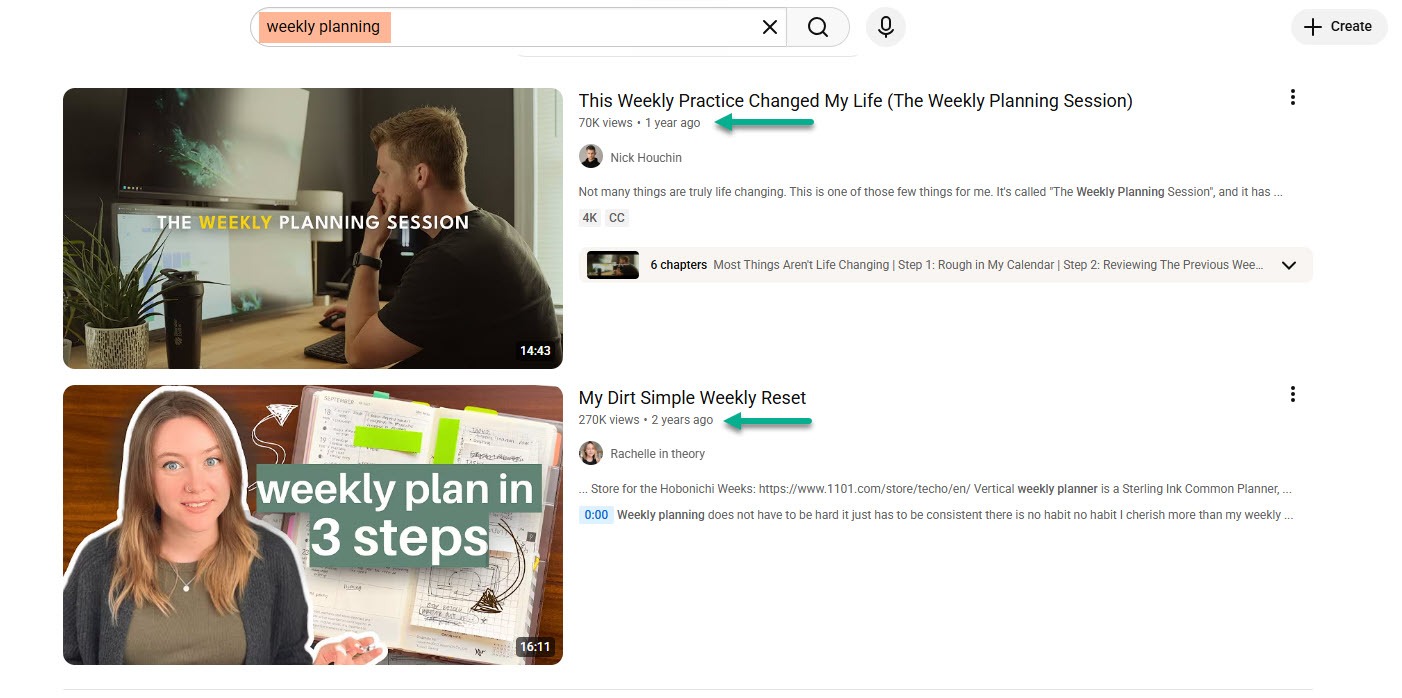
Many views indicate that people are searching for a solution to this problem.
Finally, validate if people will buy the solution. After all, income is the most important point. Go to marketplaces like Amazon and Etsy to see how many sales competitors made.
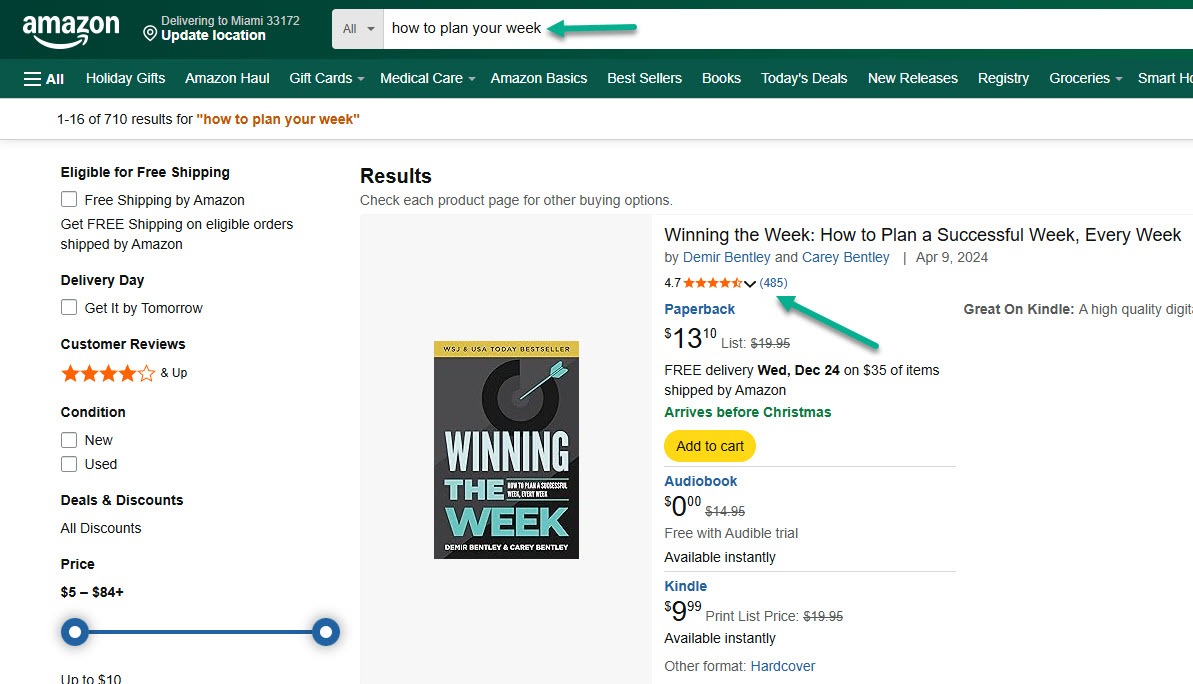
Chances are you won't find many ebooks in the narrowed niche (weekly planning). After all, you are trying to solve a new problem. Search for variations. Are people selling planners, videos, tools, etc? Write it down.
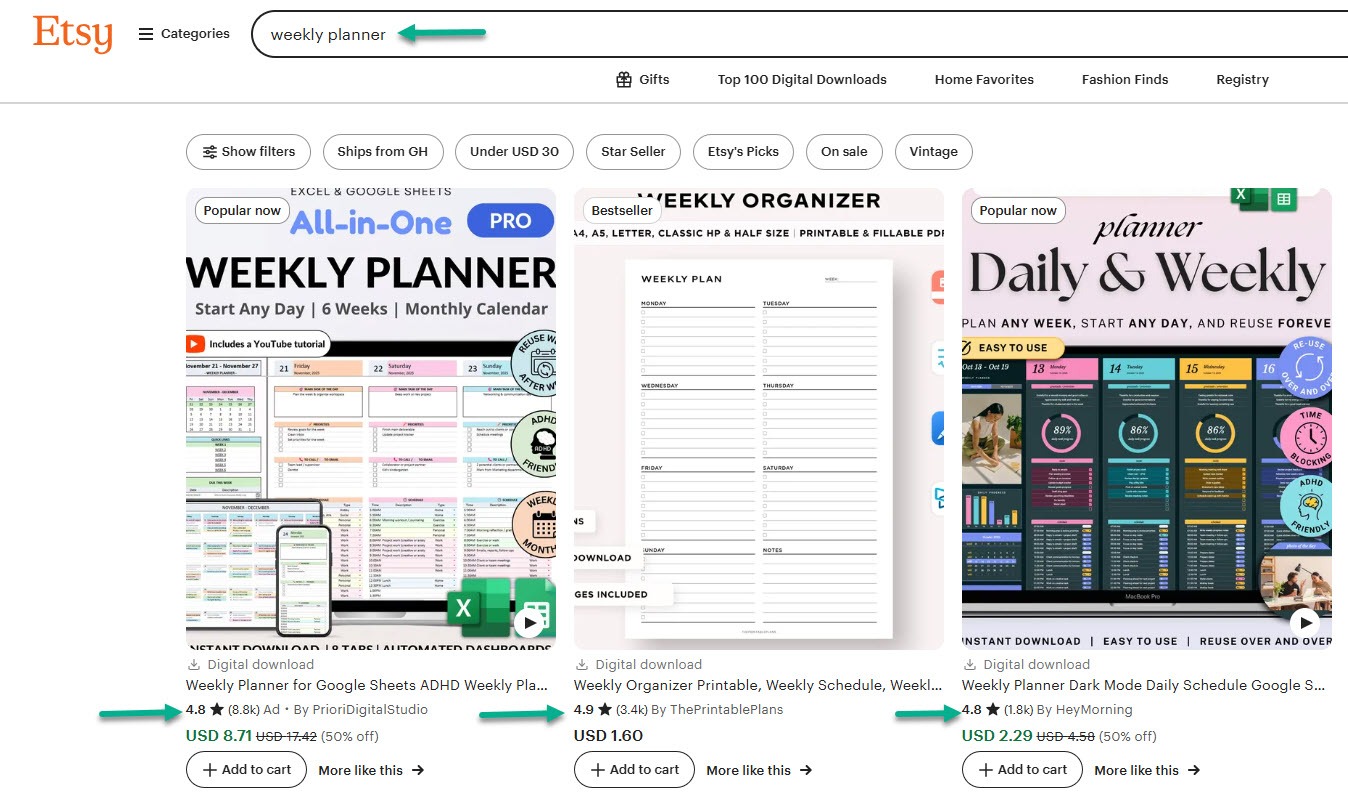
We will come back to this in Step 3: Pricing.
Next, search the parent niche (productivity). It's a profitable niche if people are buying its ebooks.
Let's continue to see how to sell ebooks online.
Step 2: Create your ebook
You have your topic. The next step in selling ebooks online is to create an eBook people will love.
There are two schools of thought here: one that believes your ebook needs to be extremely beautiful and the other that thinks aesthetics is not important.
I believe in the latter. People care more about content that solves their problems than about aesthetics. Focus on sharing real tips and strategies.
Let me prove that.
The screenshot below is from the ebook “$100M Leads” from Alex Hormozi. This page covers what to say in your cold emails when sending sales messages to people who don’t know you. Yes, the real version is actually a physical book, but the screenshot is from its Amazon Kindle version (ebook).
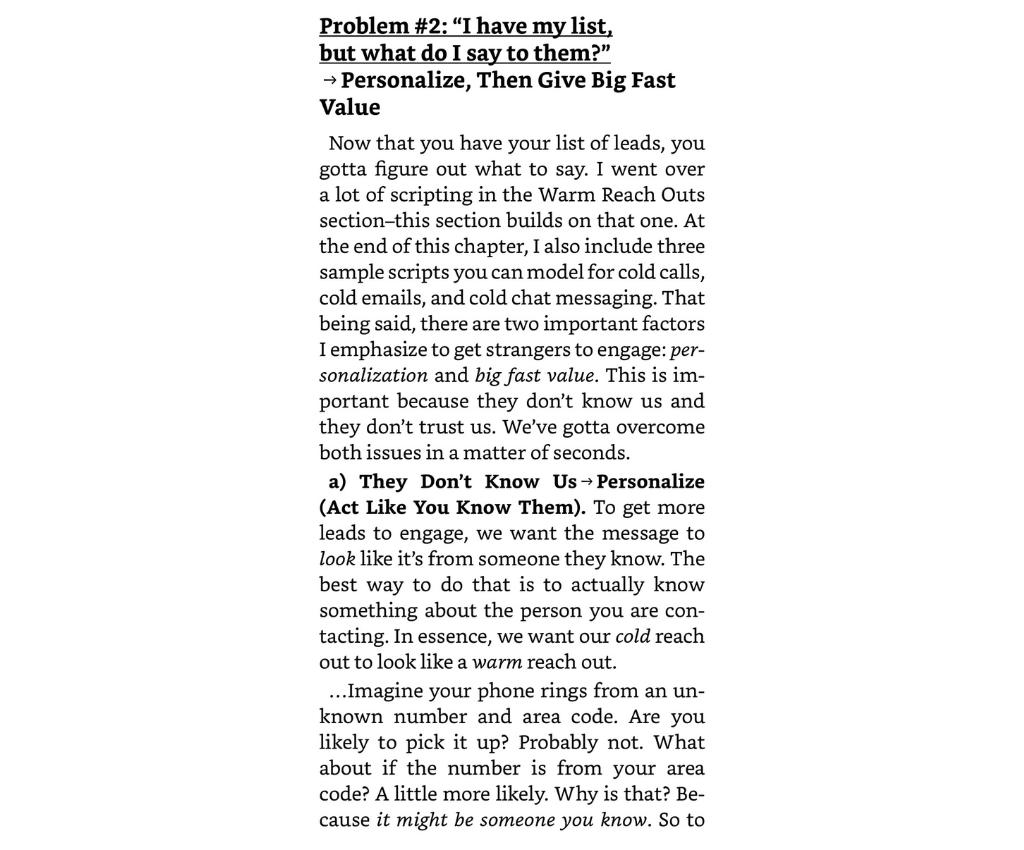
It's full of text, with no graphics on the page. However, I don't care about it because there is so much value.
Now, if you replace one paragraph with an image, the page loses its depth.
Therefore, focus on value rather than design.
Start by writing your ebook in a Google Doc or in Microsoft Word. Then create the ebook in a dedicated tool such as Canva, Figma, or Designrr. Canva, for instance, has many templates to choose from.
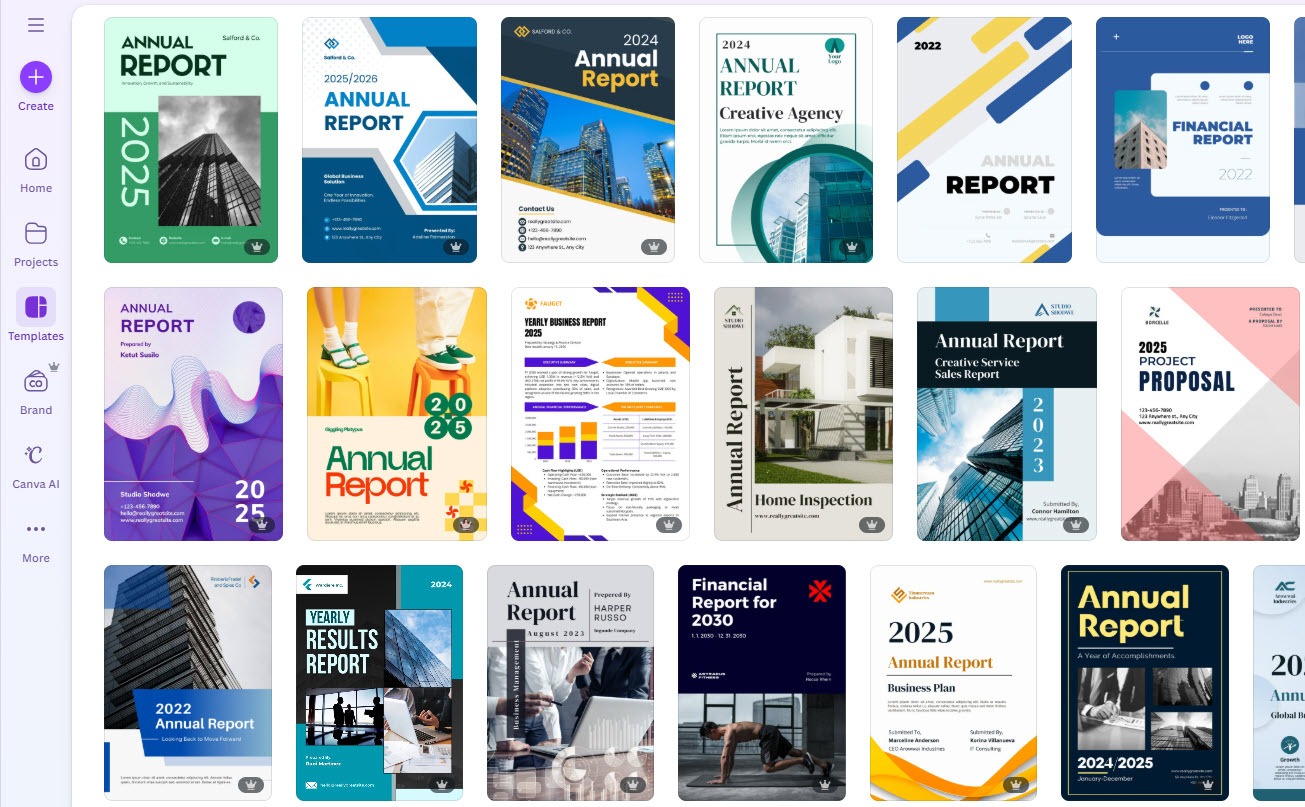
You could also hire a freelancer on Fiverr or Upwork, with an average cost of $50 to $500, depending on the length of the draft.

The following steps will show you how to price and sell your eBooks online.
Step 3: Price your ebook
Your ebook is ready. How much should you sell it for?
Ebook pricing is weird. Too low and people think it's cheap and has no value, and too high and they start asking, “Who the hell are you to sell it for $39?”
I'll give you two ways to price your ebook.
The first way is to sell a commodity.
A commodity is something everyone else is selling. Everyone is selling ebooks online about productivity; why should I buy yours? What makes yours different?
Because you're selling a commodity, you compete on price. You lower your price to make some income, and you are doomed if a competitor offers a huge discount during Black Friday, for instance.
The screenshot below is a good example of a commodity. Everyone is forced to sell their weekly planner for less than $5 to compete.
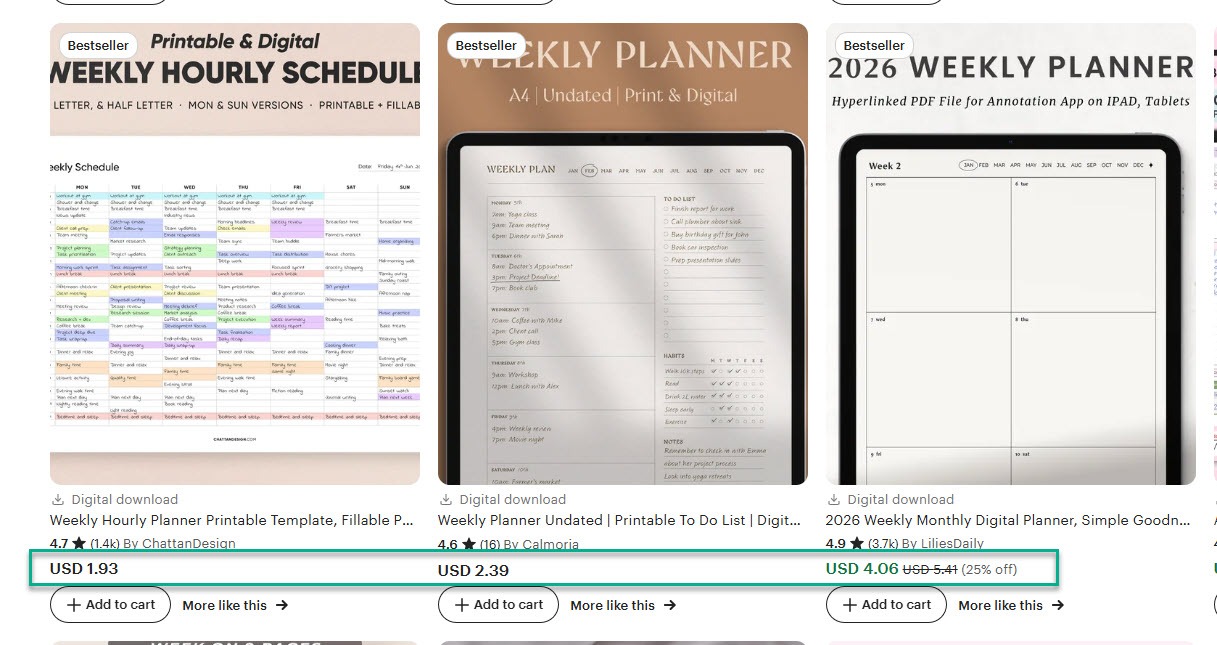
If you want to make as few ebook sales as possible, sell a commodity. Simply price your ebook lower than the competition and see how it fails.
The second way, my favorite, is to sell a bundle.
You see, if you sell your ebook for $29, people will still consider it expensive, even if your competitors sell theirs at $49. But the best way to make $29 look reasonable is to increase the perceived value of your product.
To do so, you create a bundle with many free products that customers get when they buy the ebook.
Take my “weekly planning” ebook, for instance. I could say;
“When you get your ebook today, you'll also get:
- Weekly planning ebook - $197
- An editable weekly planner (value: $97)
- Printable daily focus sheet (Value: $249)
- Editable habit tracker (value: $149)
- Bonus course: Planning in 10 minutes (Value: $299)
Total value: $991
Today only $27
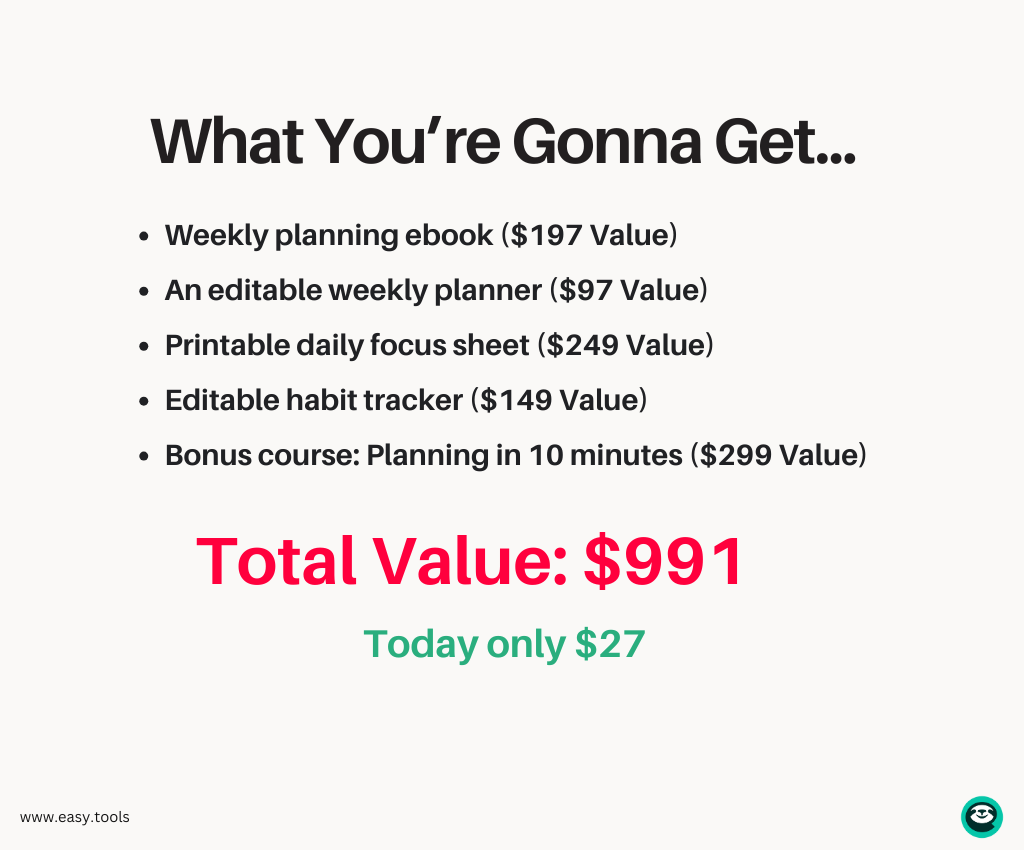
In simple terms, you make an offer so good that people will feel stupid if they don't buy. Here, you don't lower your prices. Even if your ebook is 50% more expensive than the competition, people will still buy it because they get free items.
So before you start selling your ebook, ask yourself: What will the reader need in order to apply this ebook?
People love editable items, and they sell a lot. If you don't know what to add, ask ChatGPT or Gemini for more ideas.
And that's how you sell ebooks online and generate monthly income.
Step 4: Choose your ebook selling platform
You've created a new ebook, and you know how much you'll sell it for. The next step is to choose an ebook selling platform.
This platform should let you
- Create a sales page,
- Collect payments,
- Host and deliver the ebook and the other free items,
- Manage your transactions and income, and
- Manage your customers’ personal information.
One tool that perfectly matches all these items is Easytools.
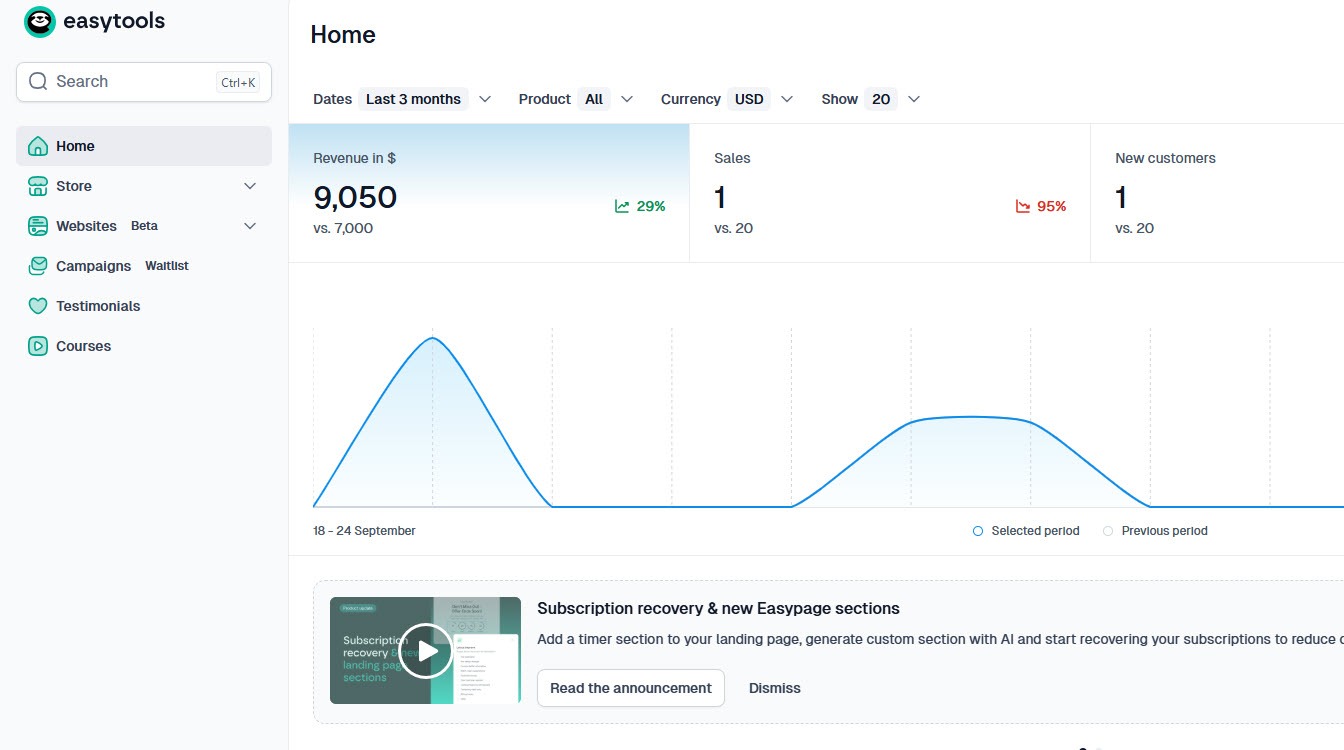
Let me briefly show you how to sell ebooks online with Easytools. For those who prefer watching instead of reading, check out this tutorial video explaining how to set up your platform.
After creating your free account, go to Home, scroll down, and click ‘ebook.’
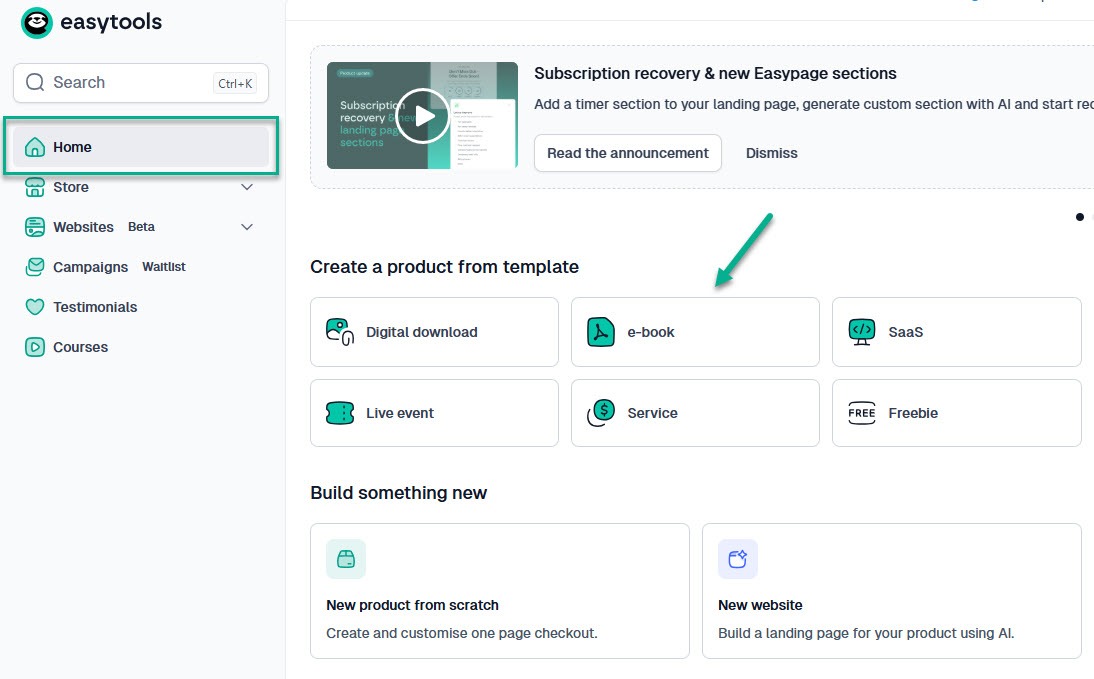
After naming it, choose your currency and enter your price.

Next, describe your product. Make it catchy and tell buyers what results to expect from your ebook.
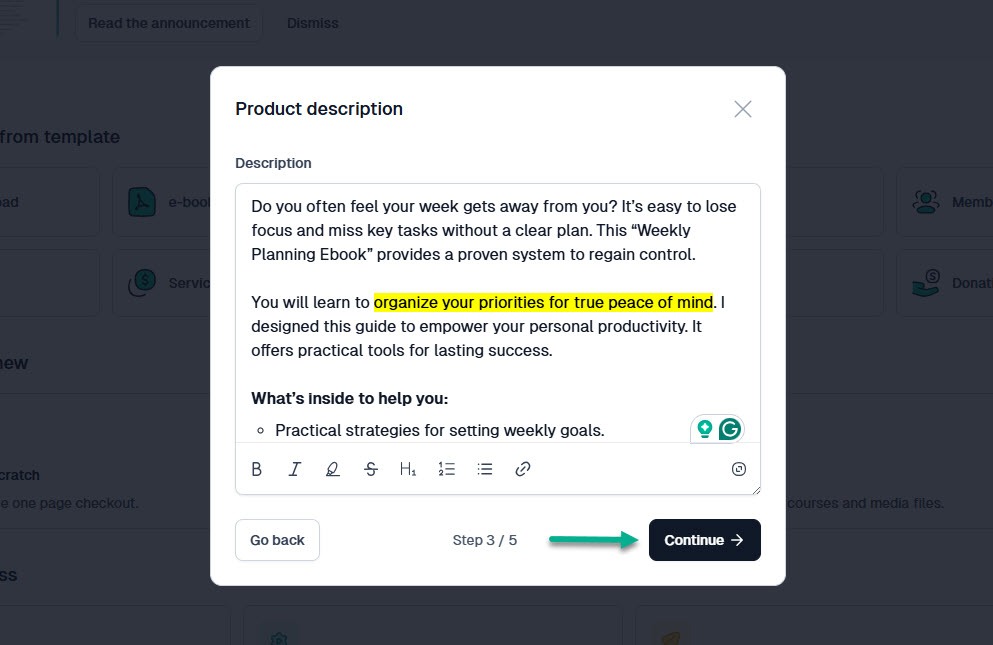
Upload the images that best describe your ebook. I will use dummy images for this tutorial.
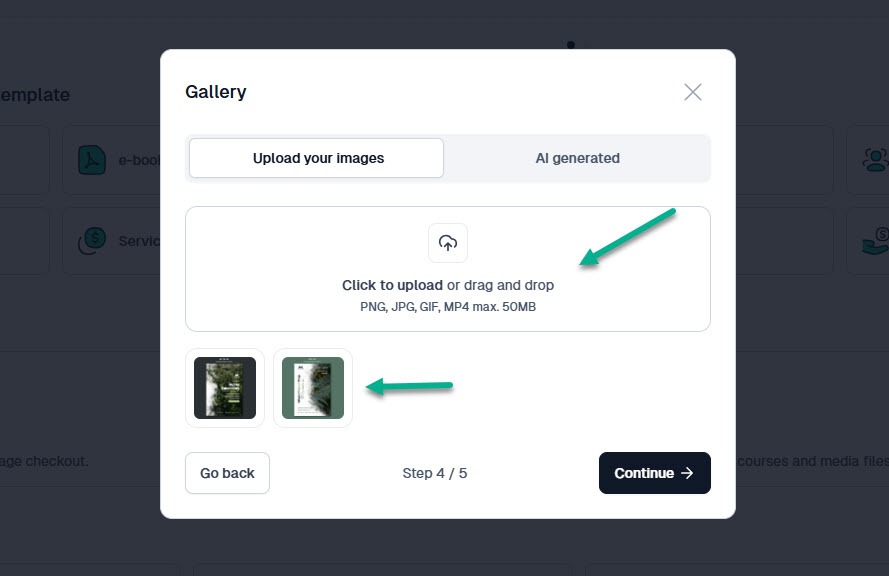
Finally, upload your ebook. Easytools will automatically send it to the people who purchase it.
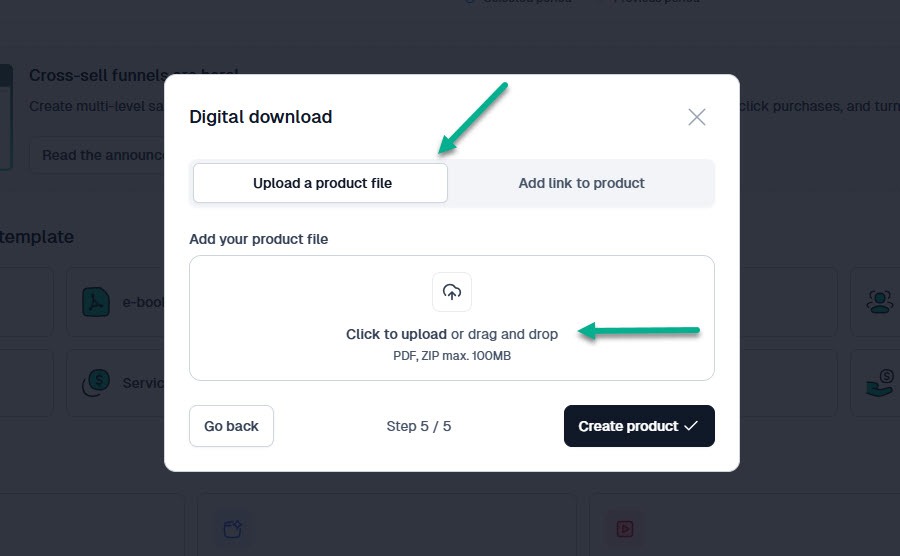
Then you simply click ‘Create product’ - your checkout is ready and your ebook can be purchased. You can also go to the checkout configurator, where you can make more edits.
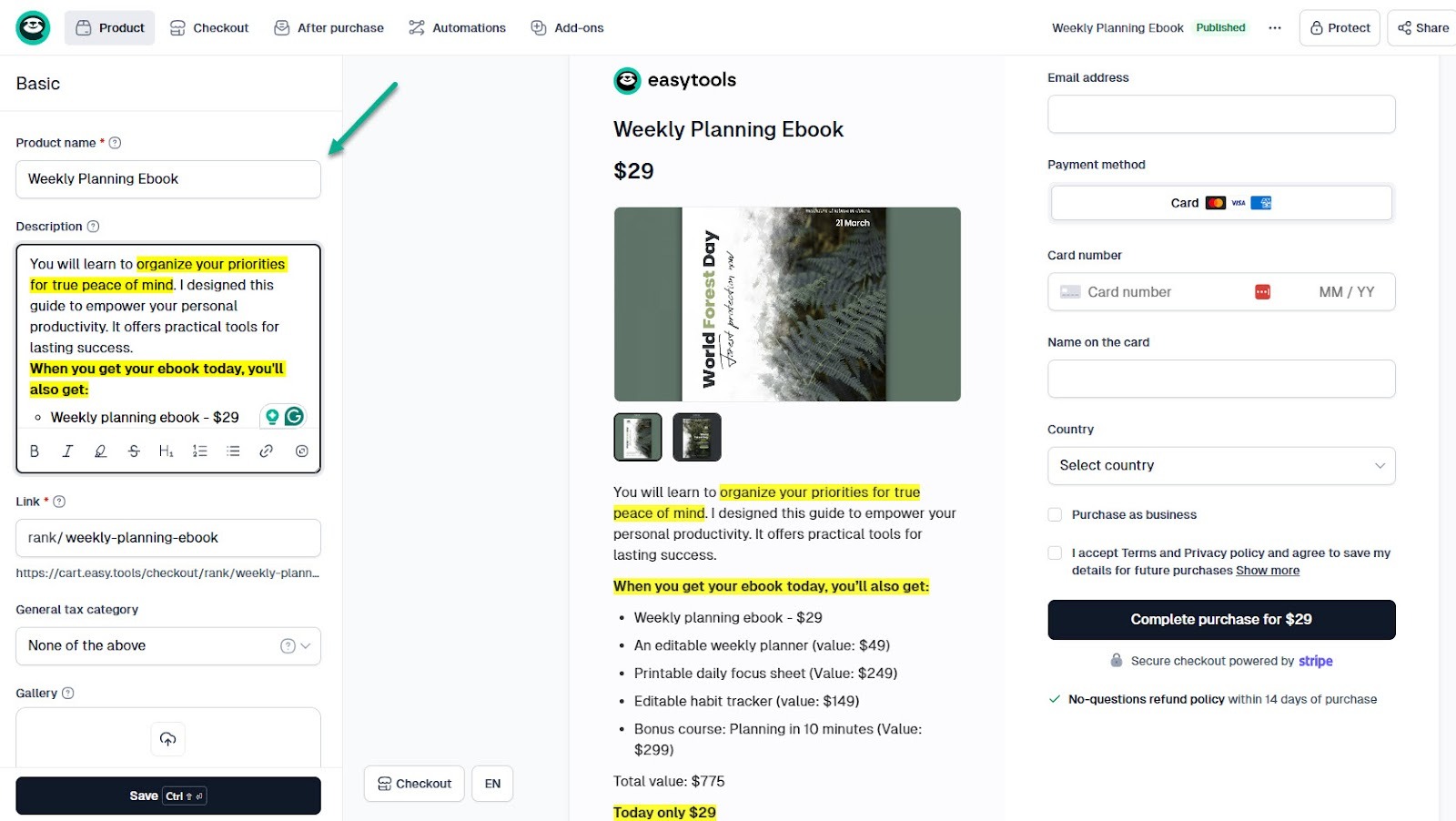
Once you are satisfied with the changes, including using your own branding, click ‘Publish’ to make your checkout page live.
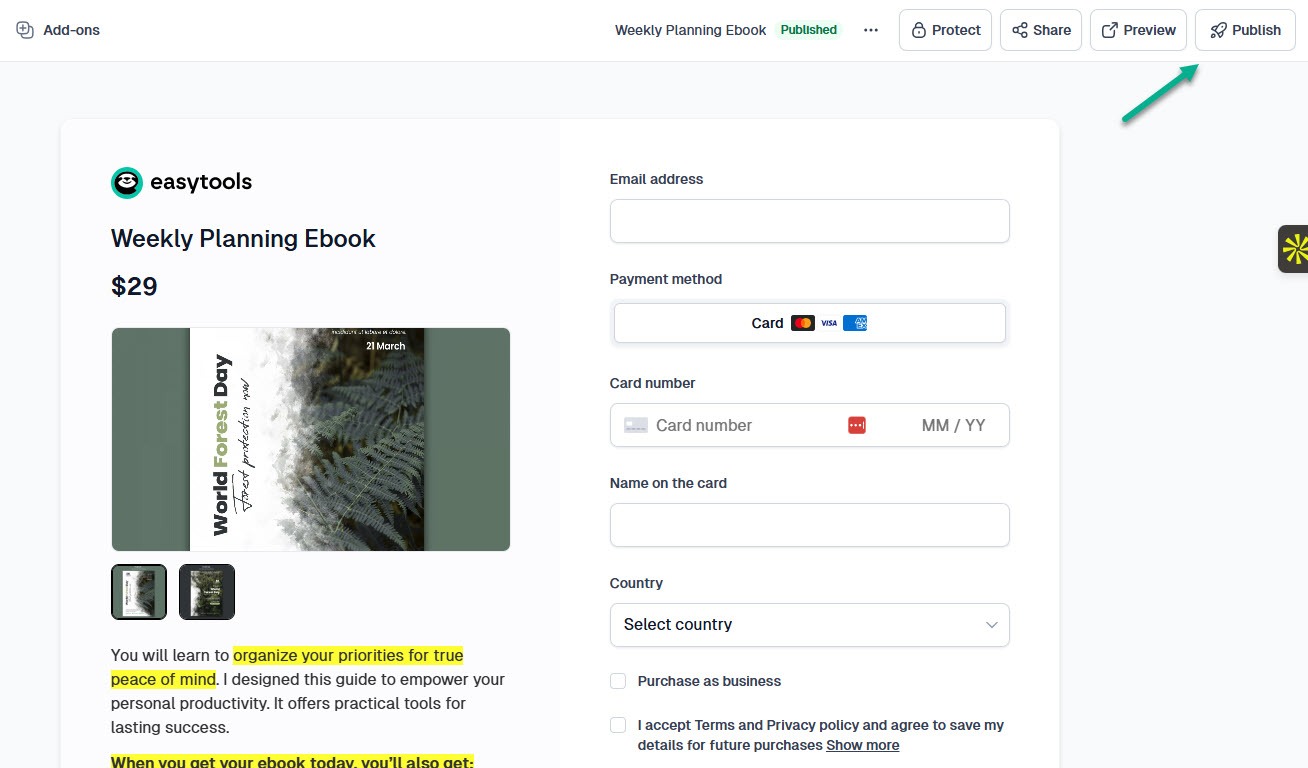
This is what the final checkout page will look like.
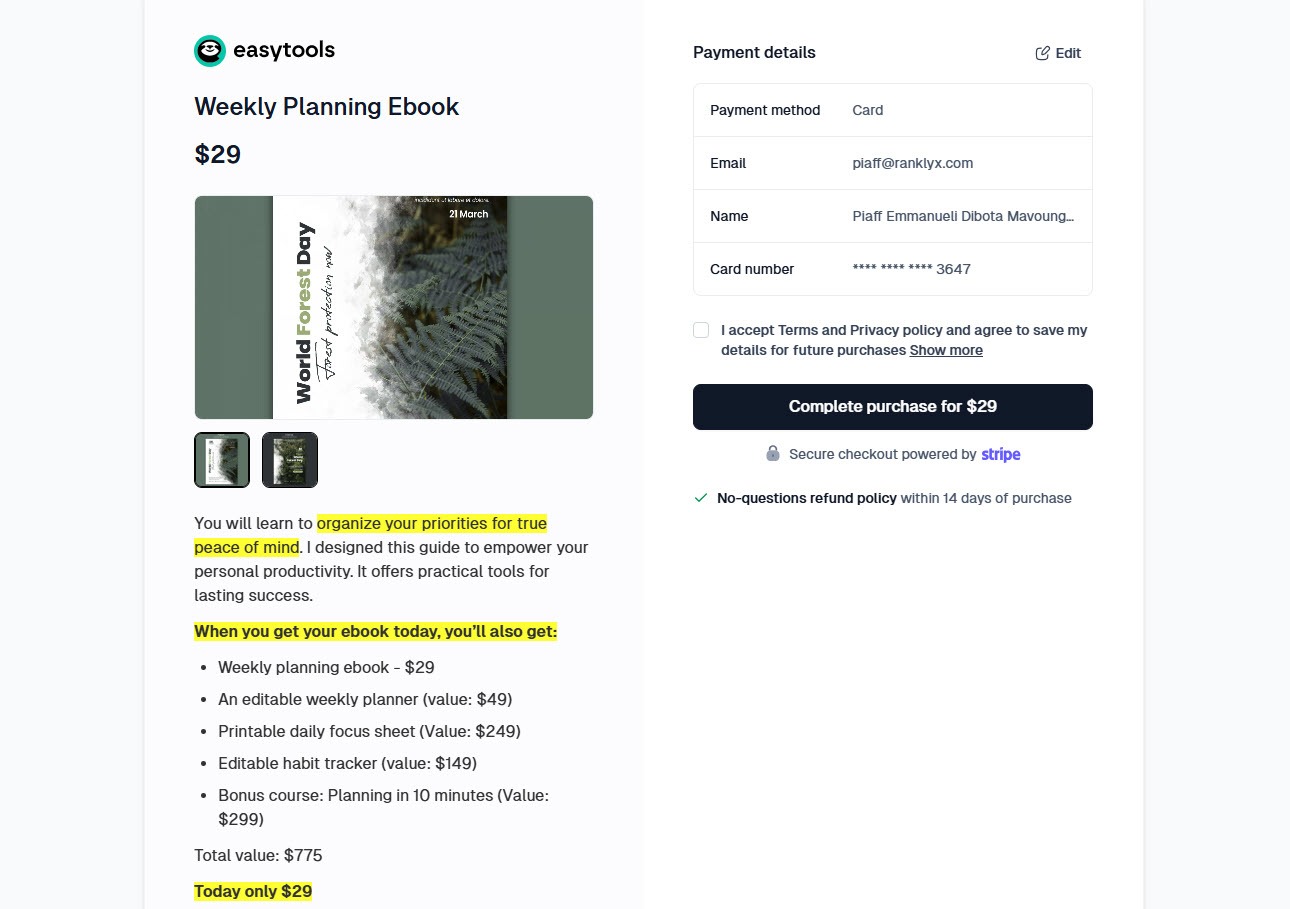
There are other platforms for selling digital products, like Amazon and Etsy. However, they don’t give you much control, charge a lot of fees, and don’t let you manage your customer data.
Easytools, however, solves these problems for new and established online creators. You can collect and display reviews, create websites, or export customer data to your email platform.
As a course platform, you can also create and sell online courses to your new customers. And when you are ready, increase your income by selling a membership program.
{{cta-banner-1}}
Step 5: Market and promote your ebook
Let's continue to see how to sell ebooks online.
Once your ebook and sales page are ready, the real game begins. You don’t need a massive audience, but you do need to appear in the right places.
Start with people who already know you:
- Email list
- Social media
- YouTube channel
- Website
It doesn't matter if you only have 200 followers on Instagram. One good post can get you 10,000 impressions and 400 buyers.
I believe you've already seen posts where the creator asks you to comment with a particular word and they'll DM you the product. Do the same using a tool like ManyChat. Ask people to comment “Productivity,” and you'll send them the link.
Take advantage of Reddit as well. It’s such a goldmine that many creators overlook. It's full of founders, developers, creators, marketers, and more.
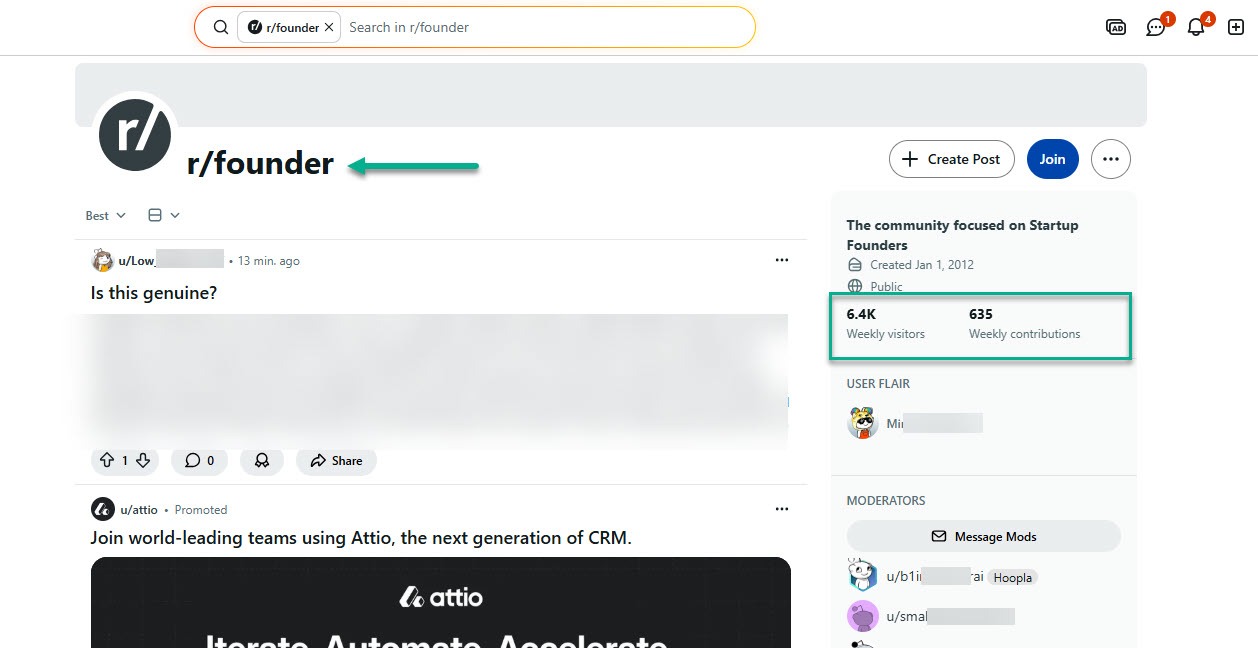
Share some of the tips you wrote in the ebook for free. Join a subreddit about founders and say something like;
“With this post, I will help you complete 25 tasks this week. Complain in the comments if this won't work for you.”
That's catchy, and that will make them talk.
People who say, “This might work since I have five clients,” DM them the link. They have the money to buy now, and they can even buy your future products.
And people who comment, “This doesn't make any sense and won't work for me,” ask them to explain their real pain and share how they can apply one of the tips in the ebook.
One answer to a negative comment can get you 100 views and 20 buyers.
Also, depending on your ebook topic, invest heavily in LinkedIn.

Take my “weekly planning” ebook, for instance. Founders, marketers, and employees will love it. Every day, I’ll share a weekly planning tip and apply it to specific roles and scenarios.
“Here is how to plan your first week at your new job… if you don't want your team to lose faith in you.”
“It took me 15 years to learn this weekly planning trick. I will never make the same mistake again.”
And now, there is TikTok Shop. You can sell your products directly on TikTok to maximize profit.

These organic traffic methods are free, but will take some time to get good results. If you are consistent, you'll increase your income faster than anyone.
Another way to promote and sell ebooks online is through paid advertising. You pay Google, Facebook, TikTok, LinkedIn, and more to promote your product.

Step 6: Increase ebook sales and revenue through upsells
We already talked about overdelivering and how adding more value to your ebook will make it stand out and attract buyers. Another thing I strongly recommend is adding even more value beyond your ebook itself.
There's this book called Dotcom Secrets by Russell Brunson that covers this perfectly. He has this concept called The Value Ladder that's such a simple idea, you'll wonder why you didn't think of it yourself.
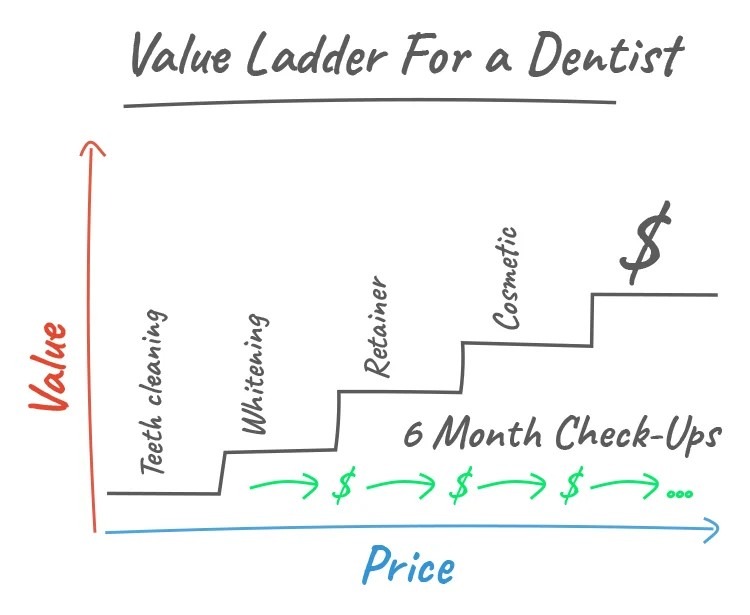
In simple terms, the value ladder shows the next things you want to sell to your new customers to achieve the bigger result they seek.
For my “weekly planner” ebook, the value ladder could be a
- Course on building a productivity system that lasts
- 1-to-1 coaching on personal development to achieve 10x more in business and life
- A membership program where people get ongoing support, new tools, and accountability
- Company or team coaching to help entire groups improve productivity and execution
Creating a similar value ladder (upsells) will be difficult if you are a new creator. So start small. You could start with an ebook, then create an online course later, and offer a done-for-you work after.
These upsells will help you generate more income.
Let's assume this is your value ladder.

I sold an ebook for $29 and got 500 buyers. I then sell a mini course for $49 and 20% buy. Finally, I offer a done-for-you service for $499 and 1% buys.
How much do I make?
- ebook: 500 buyers x 29 = $14,500
- Mini course: 20 percent of 500 is 100 buyers x 49 = $4,900
- Done for you service: 1 percent of 500 is 5 buyers x 499 = $2,495
→ Total earned: $21,895
With good upsells, you can generate more income selling ebooks online.
Sell your ebook online
Selling ebooks online is easy. All it takes is picking a profitable topic, pricing your ebook well, choosing a great selling platform, and promoting your ebook.
And when you combine it with good upsells, you'll increase your income every month.
Apply the tips shared in this guide and use Easytools to sell your ebook online.
Related articles
Ready for more? Check out these related articles that will keep your momentum going. They’re packed with easy-to-follow tips and tricks to help you supercharge your digital goods business.
Take it easy with Easytools
Focus on creating, and let Easytools handle the behind the scenes work.





